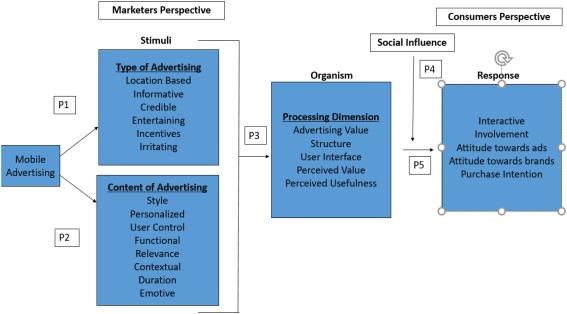Future-Proofing Education: Top Strategies Policymakers Need to Embrace Today
The rapid pace of technological change, global economic shifts, and unforeseen global challenges demand that education systems be more resilient and adaptable than ever before. For policymakers seeking to future-proof education, adopting innovative strategies is essential for preparing students for an unpredictable world. in this article, we’ll explore actionable strategies, key benefits, real-world case studies, and practical tips that will guide policymakers in creating more robust and dynamic learning environments.
Why Is Future-Proofing Education Critically important?
Modern education faces new challenges, from the fourth industrial revolution to evolving job markets and digital disruption. Future-proofing education isn’t just about introducing the latest tech tools—it’s about cultivating a resilient, adaptable system that nurtures skills for lifelong learning and global citizenship. here’s why it’s essential:
- Technological Advancements: Automation and AI are reshaping industries, requiring new competencies.
- Changing job Landscape: According to the World economic Forum, 65% of children entering primary school today will ultimately work in jobs that don’t yet exist.
- Globalization: Cross-cultural dialog and digital literacy are increasingly important.
- Unprecedented Challenges: Pandemics and climate change highlight the need for flexible, resilient education systems.
Top Strategies for Future-Proofing Education
Here are the most effective approaches policymakers can adopt today to create an education system built for tomorrow:
1. Integrate Emerging Technologies
- digital Classrooms: Leverage online platforms, virtual learning environments, and adaptive learning tools to facilitate personalized, flexible learning experiences.
- STEM and Coding: Embed science, technology, engineering, and mathematics (STEM) and programming skills in curricula from early ages.
- Artificial Intelligence: Use AI-driven analytics to identify student learning gaps and provide targeted support.
2. Foster Critical,Creative,& Computational Thinking
Build curricula around higher-order thinking skills and real-world problem solving. This enables students to adapt and innovate across disciplines.
3. Promote Life Skills and Socio-Emotional Learning
Employers increasingly value skills like teamwork, communication, adaptability, and emotional intelligence. Incorporate socio-emotional learning (SEL) and character education programs to support holistic progress.
4. Cultivate Lifelong Learning Pathways
- Support adult upskilling and reskilling programs through accessible online learning opportunities.
- Recognize non-traditional credentials, such as micro-credentials and digital badges.
- Encourage flexible, modular, and continuous education opportunities beyond traditional degrees.
5. Reimagine Teacher Training and Professional Development
Empower educators through ongoing professional development and training in digital literacy, blended learning, inclusivity, and interdisciplinary teaching methods.
6.Prioritize Equity and Accessibility
- Close the digital divide with investments in infrastructure, devices, and broadband internet access for all learners.
- Support inclusive education policies for students with disabilities and those from marginalized communities.
- Promote gender equality and cultural responsiveness in all educational materials and practices.
Practical Tips for Policymakers
implementing future-proofing strategies can be challenging. Here are practical steps for policymakers:
- Start with Pilot Programs: Test new approaches with small-scale pilots before scaling up.
- Encourage Stakeholder Collaboration: Involve parents, educators, students, and industry experts in the reform process.
- Adopt Data-Driven Decision Making: Use education data and outcome assessments to iteratively improve policies and allocation of resources.
- Ensure Sustainable Funding: Commit to long-term investments in technology, teacher training, and infrastructure.
- Stay Flexible: Update policies regularly to keep pace with changing technology and workforce needs.
Case Study: Finland’s Education Transformation
Finland is recognized globally for its forward-thinking, student-centered education system. Key strategies include:
- Phenomenon-Based Learning: Interdisciplinary projects based on real-world problems,fostering collaboration and critical thinking.
- Investing in Teacher Quality: Teachers must hold master’s degrees, and ongoing training is prioritized.
- equity at the Core: All Finnish students have access to nutritious meals, special education support, and high-quality learning materials.
The result? Finnish students consistently rank among the world’s top in reading, math, and science—and report high levels of well-being and engagement.
Benefits of future-Proofing Education
- Improved Student Outcomes: Graduates are better prepared for the rapidly changing workforce.
- Greater Inclusivity: Bridging the digital divide and offering support for all learners leads to a fairer education system.
- National Competitiveness: countries with agile education systems can adapt quickly to global trends and innovation.
- Societal Resilience: A more adaptable population is better equipped to handle challenges, from economic recessions to climate change.
Overcoming Barriers to Implementing Change
While the case for future-proofing education is strong, policymakers may face several hurdles:
- Resistance to Change: Engage educators and communities early to build support for reforms.
- Budget Constraints: Explore public-private partnerships, grants, and international support to supplement funding.
- Technological gaps: Address infrastructure disparities with targeted investments in rural and underserved areas.
Through strategic planning and inclusive leadership, these challenges can be overcome, ensuring all students benefit from a future-ready education system.
Conclusion: The Path to a Resilient Education System
The future of education hinges on the willingness of policymakers to embrace change, catalyze innovation, and commit to lifelong learning for all. by implementing data-driven strategies, investing in educators, prioritizing technology, and fostering equity, policymakers can build education systems that empower every learner to thrive in a dynamic world. Now is the time to act—because future-proofing education isn’t just a policy goal; it’s a promise to the next generation.

